|
February 21, 2001: Features In
the Big Leagues by Matt Golden and Dan White Professional sports leagues
today occupy a place of prominence in our national
Behind the scenes, Steve Mills '81 controls play for the Knicks Two hours before the New York Knicks tip off against the Boston Celtics, Knicks executive vice president of franchise operations Steve Mills '81 has carved out some time for an interview. But the demands of running an event at what he and many others refer to as "The World's Most Famous Arena" - Madison Square Garden - keep interrupting. The telephone rings, and Mills is off to an impromptu meeting with Knicks general manager Scott Layden, who wants to discuss plans for longtime Knick and current Seattle Sonic Patrick Ewing's return to the Garden. Mills later explains, "We caught some heat in the media when 'Oak' (former Knick and fan favorite Charles Oakley) came back for the first time because we ran a highlight film of his Knicks career at halftime, while the teams were in the locker room." Consequently, Layden and Mills are planning ahead for number 33's February 27 homecoming. "Do we show a video? Should we present a gift?" Mills wonders before adding, "We'll eventually retire his number, so we're struggling with what to do now as opposed to then."
After a pregame reception for season ticket holders, Mills paces down a remote hallway that leads to the bowels of the Garden. "Stevie Mills, I need to talk to you," hails Knicks point guard Charlie Ward. "Steve, you got a minute?" asks New York Times sportswriter Chris Broussard. Then a last-minute briefing from the woman who has choreographed tonight's elaborate halftime show and it's off to a small booth way up in the Garden's rafters. Event script - a minute-by-minute breakdown of all that will be seen or heard by the fans during the game - in hand, Mills coordinates everything except the score, from public address announcements to media relations to promotional events. He makes changes on the fly so that the "event presentation" will be appropriate whether the game is a blowout or a thriller. For Mills, who says he started his career with the NBA "as low as you can start on the totem pole," the job responsibilities don't end with the game's final buzzer. "I oversee the financial, marketing, and community relations operations of the team and the day-to-day operations of the franchise," Mills explains. "I'm also involved, because of the way they impact our budget, with player transactions." Mills joined the Knicks in September 1999 after a 16-year climb through the NBA's corporate headquarters. He started as an account executive for the league in 1983 and caught his big break with a move to the NBA's Special Events unit. Mills recalls, "I moved into that job as the league was starting to expand globally. . . . My job was to manage, from start to finish, the events that the NBA produced. Some of the things that fell under my umbrella were the All-Star game, the draft, the draft lottery, NBA corporate meetings, and the international events, including the creation of the first Olympic 'Dream Team.' That was a fantastic learning experience because you had to understand the television, marketing, and public relations sides of the business as well as event presentation." Mills was a three-year starter (freshmen were ineligible for varsity athletics at that time) at guard for the Princeton basketball team and cites his experience at Old Nassau and playing for coach Pete Carril as major reasons for his career success. "Princeton made me a more diverse person, and playing for Coach Carril was wonderful because he teaches you a lot about yourself," Mills says. "You learn how to be disciplined and how to look at yourself critically so that you can improve upon your flaws or shortcomings. That has been valuable throughout my career." So valuable that Mills has landed his dream job. "As a kid who grew up in New York," Mills says, "I couldn't help but be a Knicks fan. Now, I get to experience, from the other side, what the Knicks mean to this city and this area. Each time I see someone on the train wearing a Knicks hat or hear people on the street talking about our games, I feel a sense of pride and satisfaction." By Matt Golden
Chris Larson '81 has his eye on the ball - and on the Mariners' bottom line
In 1992, Seattle civic leaders approached Chris Larson '81 and other local businessmen with a problem: The owner of the struggling Mariners baseball team wanted to sell or move the franchise to another city. A Japanese buyer had offered to keep the team in Seattle but he wanted help from local investors. Larson was a Seattle native and an ardent sports fan. More to the point, he had been the fourth employee at Microsoft - one of the fabled founders who designed the software products that revolutionized computers and who had become wealthy in the process. Larson agreed to buy in, and the deal was done. Today, Larson, who continues to work full-time at Microsoft overseeing a group of programmers, is the sometimes proud, sometimes troubled possessor of a practical Ph.D. in the economics of owning a sports franchise. After eight years of financial losses, a new stadium built over budget, and ever-soaring players' salaries, Larson says if he had known then how bad the economics are in a small- to medium-sized market, he wouldn't have signed up.
So he says. Last season the Mariners captured the division title and battled the mighty Yankees before losing in the playoffs. Civic pride is as high as Mt. Rainier, the city has a jewel of a stadium, and Larson and his business partners had a profitable year for the first time in their ownership. Last November, Larson showed a visitor around the one-year-old downtown Safeco Field. The roof was open to the unseasonably dry day, and the natural turf field basked in the sun. Anchored to bedrock by 500 80-foot pilings, the stadium is in a seismic zone rated the same as California's. "Take me out to the ball game will no longer do," says Larson, in glasses, casual pants and white sneakers. "Now it's take me out and give me padded seats, waiter service, heated concourse, and a sliding roof. I'm not involved in day-to-day operations, but as owners we meet once a month to review budgets and policy. The largest amount of money, of course, is spent on the ballplayers' salaries. Not a day went by this past summer that someone didn't ask me about Alex Rodriguez." (The Mariners' brilliant 24-year-old shortstop asked for a lottery-sized annual salary of $20 million-plus, then bolted to the Texas Rangers for $252 million over 10 years. This came on the heels of two other Seattle superstar departures, those of Randy Johnson and Ken Griffey, Jr., both of whom were traded because of their impending free agency.) "We want to break even or make money and have a great team on the field," says Larson, "but there has to be a balance." He attends about two-thirds of the home games with his wife and five children. "Unlike the fan watching the field, I'm looking at the accumulation of garbage and litter during the game and wondering are we shorthanded today, and who's supposed to clean it up." The minority owners rotate stints as general manager for the partners' interests. While Larson has so far put that off, he will eventually take his turn. In the meantime, he devotes weekends to soccer chauffeuring for his kids, and he reads voraciously, especially books on the economics of sports, most of which disappoint him. "Economists fail to appreciate fully the business justification for some of the issues, for example, public subsidy for new facilities," Larson says. "How long should owners have to lose money before they move to another market? The public can't have their cake and eat it too. This stadium cost $500 million to build. The owners paid one-third of that. "A baseball team is a bad business for anybody but the players, but - " He gestures toward the sparkling emerald field, fresh, crisp, and beckoning. "We have a tremendous sense of accomplishment at turning the franchise around. We don't regret it, though we're a lot wiser for the experience." By Dan White
Sandi Bittler '90 keeps the Fire blazing Among the idiosyncrasies that distinguished Pete Carril, Princeton's longtime men's basketball coach, was a two-handed set shot that he used to launch with unerring accuracy during the noontime pickup games that prevailed during his tenure. From 1986 to 1990, Jadwin was home to another, even more proficient two-hander, one who parlayed that ungainly looking shot into the second-place slot on Princeton's all-time scoring list. Two-time captain of the women's basketball team, Sandi Bittler '90 set 10 Princeton and five Ivy League records in four years of play, was a two-time Academic All-America, and was recently selected as Princeton's Female Athlete of the Century - the male choice being Bill Bradley '65. Today Bittler calls the shots off the court, as vice president for business operations at the Portland Fire, the Women's National Basketball Association franchise headquartered at the Rose Garden, across the Willamette River from downtown Portland, Oregon. Her name is listed second on the team's management roster, directly after chair Paul Allen, the Microsoft mogul who owns the Fire as well as the Portland men's NBA team, the Trail Blazers.
One of five kids, Bittler grew up in Mercer, Pennsylvania, a small town 60 miles north of Pittsburgh. "I was a tomboy - always playing ball with my twin brothers," Bittler says. "I was a shooting point guard, which translated means I was a ball hog. I liked to have the ball in my hands at all times." A biology major at Princeton with medical school aspirations, she went abroad after college to try pro ball, but came home after two months figuring she'd kill a year thinking about medical school. She killed her med school ambitions instead and went to work for the NBA league office in New York City as a fan services assistant. Answering fan mail with questions like how many league players were over six feet tall, Bittler says she became pen pals with prisoners all over the country. After five months she moved into marketing, shifting her focus eventually to women's basketball. She was the primary on-site contact and event manager for the 52-game pre-Olympics schedule of the 1996 women's national basketball team, which eventually won a gold medal at the Atlanta games. She also began researching and helping to develop a business plan for the newly formed professional women's basketball league, the WNBA. After six years with the NBA, she moved to Portland in 1996 to work for Nike as director of women's sports marketing. "It was great!" she says. "I got to spend Nike money to create opportunities for women's sports." She negotiated contracts with more than 100 women's collegiate programs, launched a local program known as "Three for All," the first basketball skills competition created exclusively for girls, and marketed the 1998 U.S. women's Olympic ice hockey team and the 1999 U.S. women's soccer World Cup team before leaving to take the Portland Fire job in 1999. Bittler oversees all business operations for the Fire, now in its second year as a WNBA franchise. "We averaged 8,300 fans our first season," she says, a small crowd compared to that of the Trail Blazers, who also play in the Rose Garden and regularly fill the 19,980-seat arena. "Our biggest challenge is building brand awareness. There's still an attitude that women's sports are inferior." One way the Fire tries to address that problem is by positioning the team differently. "We have a different atmosphere here," Bittler says. "We want it to be fan-friendly, family-oriented. Our average ticket price is $14. [A midrange Trail Blazers' ticket is twice that.] Portland fans provide a lot of support." Bittler herself hasn't touched a basketball in recent years, but she's pleased with her role in promoting women's sports. "I take pleasure in seeing how far women's sports have come. I like being part of that," she says. And the progress that's come about, in part from her efforts, may end up providing opportunities not only for others, but for herself. "I could be running the Pittsburgh Steelers one day," she muses. By Dan White
Fast-moving Bob Reif '89 takes the wheel at the Indy 500 When it comes to his job, Bob Reif '89 is not afraid to take chances. Maybe that's because he already lost everything once. Working on the island of St. Croix in the real estate business after graduating from Princeton, Reif was wiped out when Hurricane Hugo devastated the island and robbed him of everything he owned. Two years later, feeling unfulfilled in his stable and lucrative financial analyst job with Hilton Hotels in New York City, Reif didn't hesitate to make a change. The former Princeton football player bolted Manhattan for a sports marketing job in California. He recalls, "It was like a sweatshop. I was making $250 a week with no benefits and was basically dialing for dollars - cold-calling for sponsors."
That first position may not have been glamorous, but it launched Reif on his sports marketing career. Through chutzpah and luck, he eventually landed a job at well-known agency IMG, where he represented such sports notables as golfer Arnold Palmer, quarterback Joe Montana, and football coach Mike Ditka. Then it was time for Reif's boldest move yet. Three days after the Dallas Cowboys announced a ground-breaking sponsorship deal with Pepsi, he made a late-night call to Blockbuster owner and Florida sports mogul Wayne Huizenga. "It was 10:00 p.m. on a Sunday night, and I cold-called Wayne," Reif explains. "I pitched an idea to bundle the Miami Dolphins, Florida Panthers, Florida Marlins, and Joe Robbie Stadium [all owned by Huizenga] for marketing purposes." Huizenga was sold on the idea and on Reif, convincing Reif to head up his sports marketing ventures. Within 50 days of joining Huizenga, Reif had sold naming rights for the Dolphins' stadium (then named for the team's former owner Joe Robbie) to Pro Player, a sports apparel division of Fruit of the Loom, for $50 million. With Reif as his point man, Huizenga formed Front Row Communications to represent his sports entities and bought SportsChannel Florida. Reif, who became senior vice president of the Dolphins, boasts, "We controlled everything in Florida professional sports south of Orlando." Huizenga eventually sold off much of his sports empire, and in December 1999, Reif left the warmth of sunny Florida for the frozen winters of Indianapolis, where he is currently chief marketing officer for the Indianapolis Motor Speedway and the Indy Racing League (IRL). "I had a great situation with the Dolphins," Reif explains, "but how much better can things get for that franchise? This is a great opportunity for me to leave my thumbprint on something in sports." When Reif arrived, the four-year-old IRL was struggling. So Reif hired people from professional football, basketball, baseball, and soccer who had an understanding of sports marketing. And now, Reif says, "The product has really taken off." The IRL has a new sponsor, a five-year TV contract, and more races. Meanwhile, the Speedway annually hosts three of the largest single-day sporting events in the world: the Indy 500, which attracts over 400,000 spectators, the Brickyard 400, and the U.S. Grand Prix. Reif also runs those events, overseeing sales, marketing, retail, television production, food and beverage, and a number of business fronts. But he isn't satisfied yet. "We want to be the premier racing organization in the world," he says. "Bigger than NASCAR or Formula One!" By Matt Golden
Larry Lucchino '67 builds them, and they come "Jackie Robinson, free agency, and Camden Yards" - George F. Will *68 on the three most significant post-World War II developments in baseball When legendary trial lawyer Edward Bennett Williams purchased the Baltimore Orioles for $12 million in 1979, a major issue facing the franchise was the inadequacy of its stadium, Memorial Park, an antiquated facility used for both football and baseball. Williams wanted a new ballpark and assigned his protégé, Larry Lucchino '67, to the task. Lucchino promptly became the driving force behind the creation of baseball's most revered and replicated modern ballpark - Oriole Park at Camden Yards.
Using funds from a newly created state lottery, Maryland built Lucchino and the Orioles a publicly financed ballpark that has become the envy of and blueprint for the rest of Major League Baseball. Attendance at Orioles games has surpassed the 3.5 million-per-season mark in recent years, and downtown Baltimore has benefited from an influx of new businesses and tourist dollars. Following Lucchino's lead, the Texas Rangers, Cleveland Indians, Colorado Rockies, Seattle Mariners, San Francisco Giants, Detroit Tigers, and Houston Astros have each built baseball-only facilities that derive much of their style from the Camden Yards model. Lucchino, now president and chief executive officer of the San Diego Padres, hopes he can again breathe life into a financially strapped franchise through a change of address. He and the Padres are in the midst of a ballpark project (currently stalled due to financial and legal questions) that Lucchino describes as "completely different and much harder than the one in Baltimore by a factor of 10." He adds, "We are trying to advance the state of the art by building a ballpark that looks and feels like San Diego." The facility, going by the working name The Park at the Park, will feature a three-and-a-half-acre park beyond the outfield fences. That park is designed as an alternative seating option for Padres fans and will be available for public use when games are not being played. If and when it is finally completed, The Park at the Park will provide a generous revenue stream for the Padres, which Lucchino believes will allow the club to better compete with baseball's heavy hitters. "The ballpark is a tremendously important source of revenue for clubs in the medium or small media markets," he explains. "This will conceivably generate increased attendance, premium seating sales, and additional marketing opportunities. Today, financial resources, along with player evaluation, player development, and other factors, are critically important for baseball success." By Matt Golden
Matt Golden '94 is PAW's
assistant editor; Dan White '65 is a freelance
writer and consultant.
|
||||||||||||||||||||


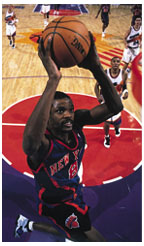

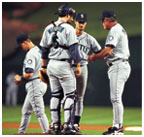
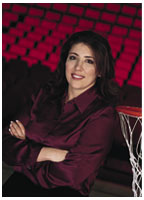


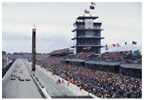

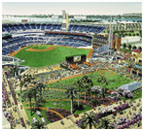 While
the project was in its infancy, Lucchino examined the most successful
franchises in baseball - the Yankees, Red Sox, and Cubs - in search
of a common thread. Lucchino says he discovered that "they
all play in baseball-only facilities with charm and character."
So, as mirror-image, multipurpose stadiums were springing up across
the sports landscape during the 1970s and early 1980s, Lucchino's
mission was to convince the government and citizenry of Maryland
that they needed to build a baseball-only facility in downtown Baltimore.
To that end, Lucchino authored an Orioles mantra calling for "an
old-fashioned, traditional ballpark with modern amenities."
His vision included, among other things, a playing field with irregular
dimensions and seating that would place fans close to the game.
And to emphasize the distinction between a traditional ballpark
and a generic stadium, Lucchino began fining all Orioles employees
$5 a pop if they used the S-word (stadium) in reference to the project.
While
the project was in its infancy, Lucchino examined the most successful
franchises in baseball - the Yankees, Red Sox, and Cubs - in search
of a common thread. Lucchino says he discovered that "they
all play in baseball-only facilities with charm and character."
So, as mirror-image, multipurpose stadiums were springing up across
the sports landscape during the 1970s and early 1980s, Lucchino's
mission was to convince the government and citizenry of Maryland
that they needed to build a baseball-only facility in downtown Baltimore.
To that end, Lucchino authored an Orioles mantra calling for "an
old-fashioned, traditional ballpark with modern amenities."
His vision included, among other things, a playing field with irregular
dimensions and seating that would place fans close to the game.
And to emphasize the distinction between a traditional ballpark
and a generic stadium, Lucchino began fining all Orioles employees
$5 a pop if they used the S-word (stadium) in reference to the project.